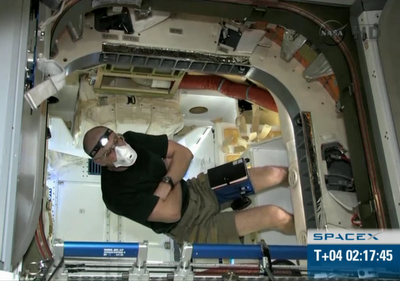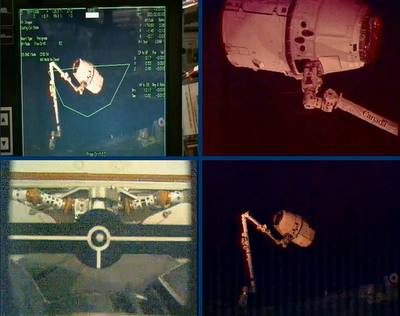Do you dream of space? I dream of space! Most people I know dream of going to space. I live in awe of people who went to space. One chicken I know even went to space! That's right. Domesticated poultry has been into the black, and you have not. Many commercial companies chock full of talented young scientists (okay, and eccentric billionaires) are trying to change that. Still others are trying to make space travel safe and affordable for tourists, one ticket at a time.

Reuben Metcalfe, an animated space enthusiast , founded Wellington (NZ) based I Dream of Space Ltd., a company negotiating deals with several up-and-coming commercial space flight providers, who will ferry a lucky winner into space through what they whimsically call their "Space Posters of Excellence".
Your ante comes in the form of purchasing a beautiful space poster through their Sales Promotion program, whereupon your chances of getting into space as a tourist are one in 25,000. (Your chances of becoming a NASA astronaut, by contrast, are about 1 in 12 million.)
Want a poster or have questions about the program? So says Reuben, "Our fancy technology devices make noises every time you do this. Every. Single. Time."
So what was your EUREKA moment? What made you want to promote a trip to space?
Reuben Metcalfe: Well for a start, it's about time someone did it! I'd been sitting on the idea for some time, and finally had the guts to test it at an event called 'Startup Weekend'. It took us around 3 hours to build, and about as long to get our first 30 customers -- and that was without even leaving the room. We were the only company that weekend to have real, paying customers. Such a process can take months in a lot of companies, so I knew we were on to a winner... since then, I've been pretty much obsessed with all things space.
Where are you in the process? I understand you move around quite a bit; where have you traveled to gather interest in The Dream?
Reuben Metcalfe: This is a regular question we've been asked since we launched a few weeks ago. I can say as of the May 2012, we have around 500 customers, though most of those came through in the last week, and we haven't even started spreading the word. There are tweaks to the site being done to tighten up the user-experience before we really start pushing this thing in earnest. In terms of my own travel, though, this is definitely a global market; we'd like to have this site in several languages soon.
A lot of the actual space-related events have been in America, so I've spent time here in California attending events in an effort to build relationships with the community/industry, and of course learn more about it myself -- which is interesting actually; there are already a number of other business opportunities in the Space industry that are just waiting for people come along and snap up, if they took the time to look.

With the technologies coming out of current commercial space companies, what do you think of their activities? How long do you think it will be before space tourism is an affordable reality?
Reuben Metcalfe: It IS an affordable reality! In terms of when the first launches are taking place, the jury's still out on who exactly is going to launch the first tourists - that is, outside of the Russians, who've been doing it for some time, though you're talking multi-million dollar ticket prices there. A good way to look at this is to go back ten years and see the activity around how involved the private sector was in 2002, how much we've achieved since then, and how many new players we're seeing enter the market. It is not an accident those numbers are growing. The public just doesn't recognize it yet because we're still too far ahead of the adoption curve.
People need awhile to get their heads around it. It's been the same story for every major leap in human innovation, from the telephone, to the automobile, the airplane, the internet... in recent years, we've seen the desktop and mobile markets go through that growth phase, and I believe we'll be seeing very serious commercial space-industry / space-tech advances in the near future... especially now that a lot of community driven projects are starting to coalesce.
In the meantime, we're focusing on making space accessible to those who've been waiting for a long time their chance to go - and of course, to make it easily accessible for a new generation of would-be space enthusiasts, who have never even bothered to think about space as an option before - that's the exciting thing for me, I think."
Excellent, thank you Reuben! And readers:
Definitely check out the I DREAM OF SPACE Facebook page and encourage your space pals to "Like" it so you can catch updates on their wall feed. Also see Reuben's talks and travels on the IDOS YouTube Channel, or see new developments at @winatriptospace twitter feed.






































